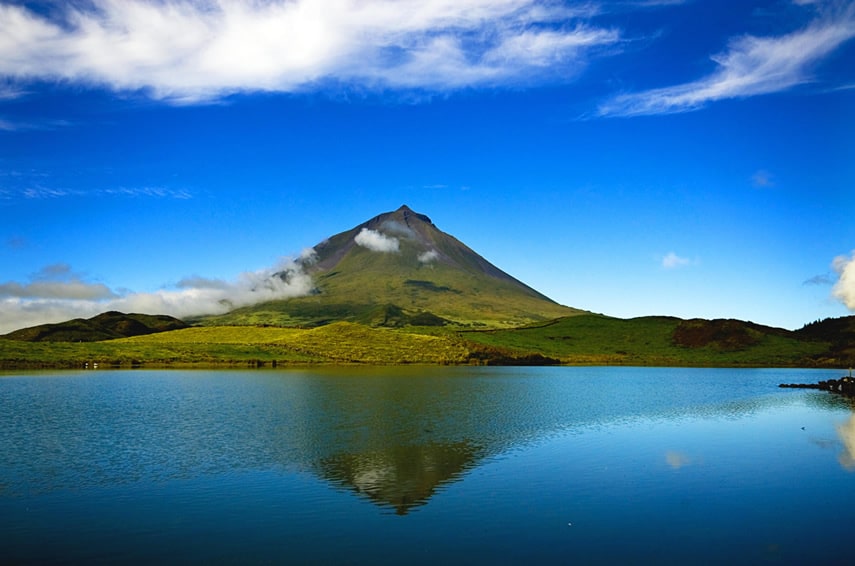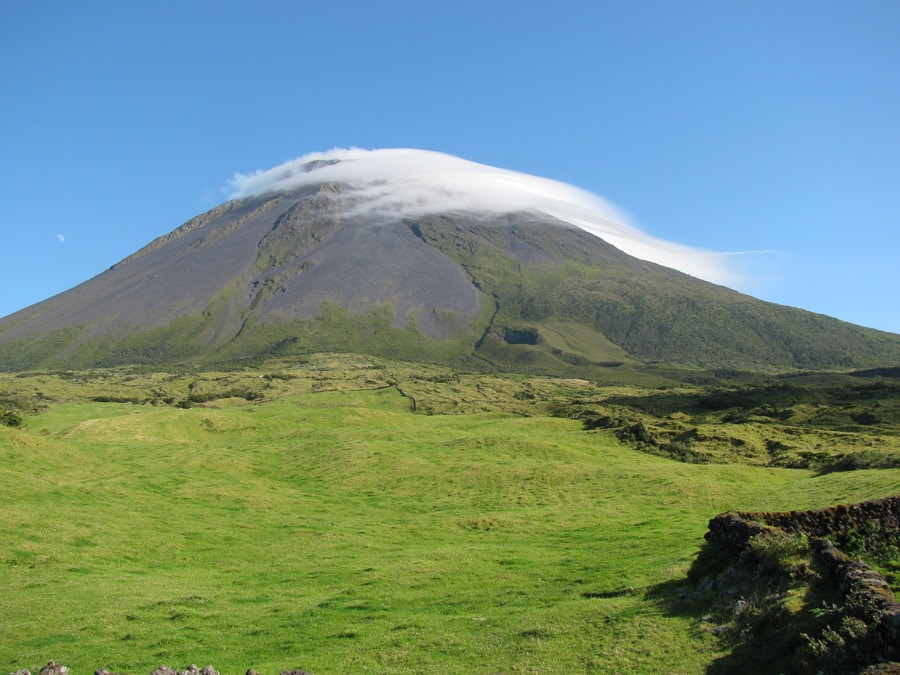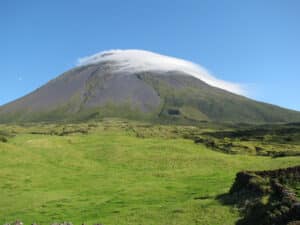Pico Mountain is the highest point in Portugal (2351 meters), the youngest (around 200,000 years old), and the largest polygenetic volcano in the Azores (rising 3500 metres above the ocean floor). It’s also the third-largest volcano in the North Atlantic. Shaped by a multitude of basaltic eruptions, it features a fossilized crater at 2050 metres altitude, which marks the division between the first and second phases of formation of this imposing stratovolcano. Within the current crater of the mountain, at 2250 metres, lies the lava cone of Piquinho and an eruptive fissure, remnants of the last volcanic episodes that occurred at the mountain’s summit, where there’s still intense fumarolic activity.
The northern and eastern edges of the crater, as well as the summit of these volcano flanks, have been impacted by collapses, which contributed to significant slope deposits, like the Areeiro de Santa Luzia and the Quebradas do Norte, Curral, and Terça. This is one of the prime geological sites in the Azores, internationally relevant with scientific, educational, and touristic value. The ascent to the volcano’s summit is an unforgettable experience.



